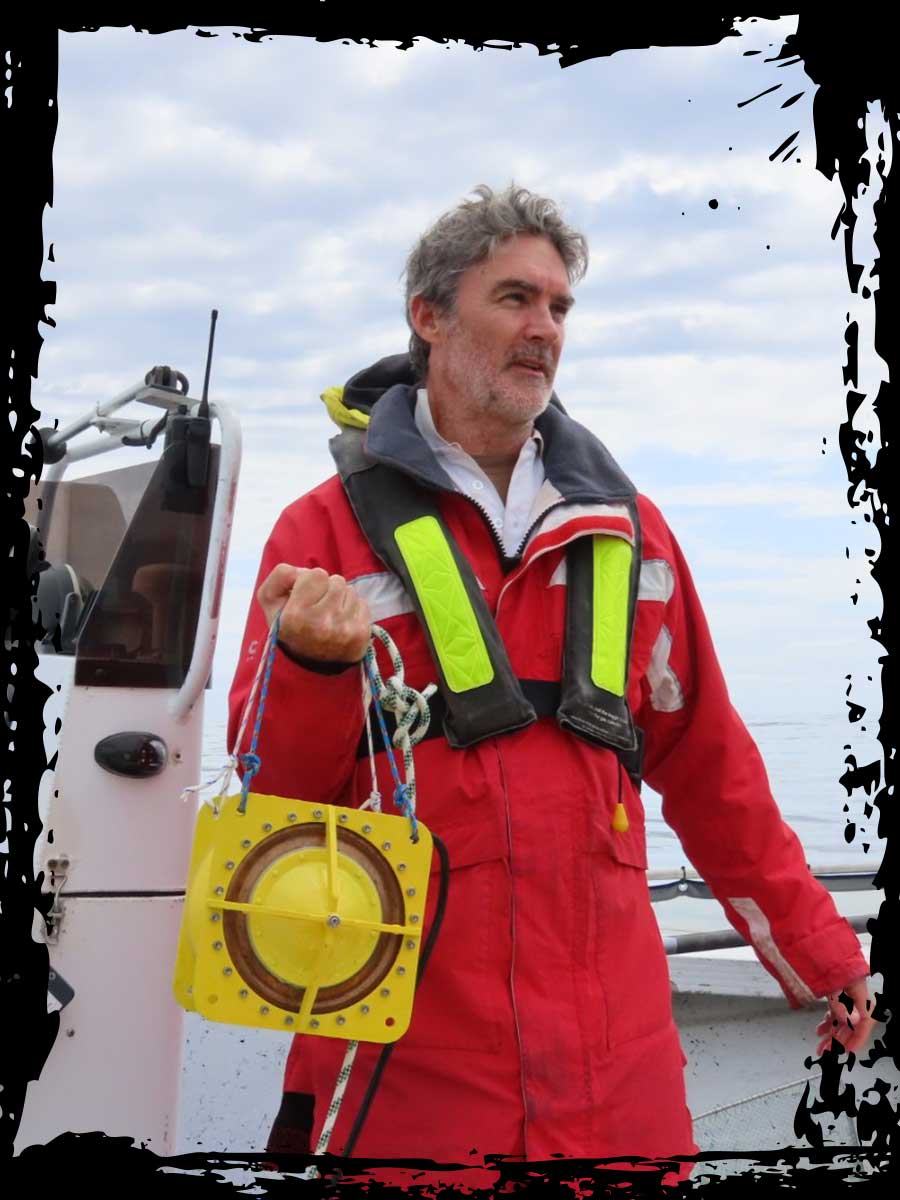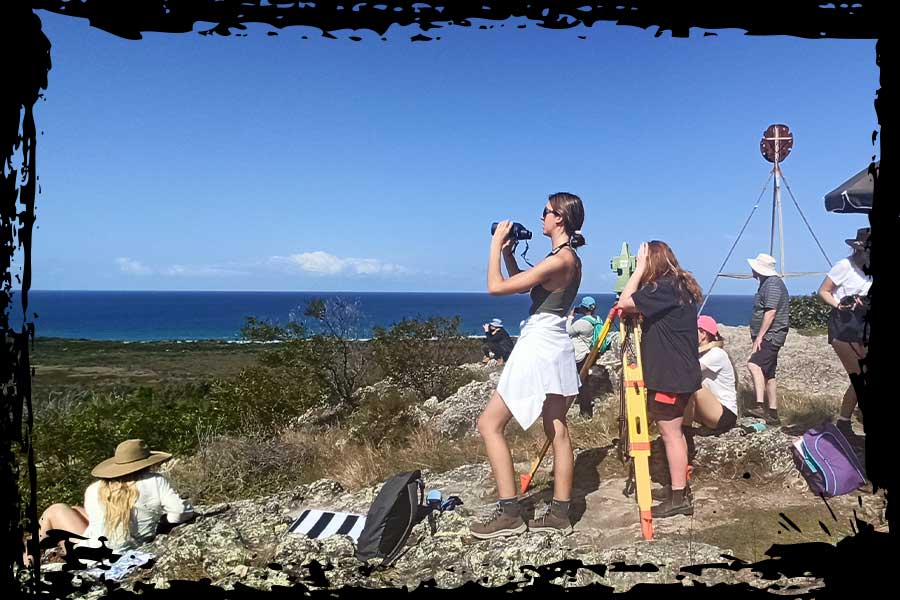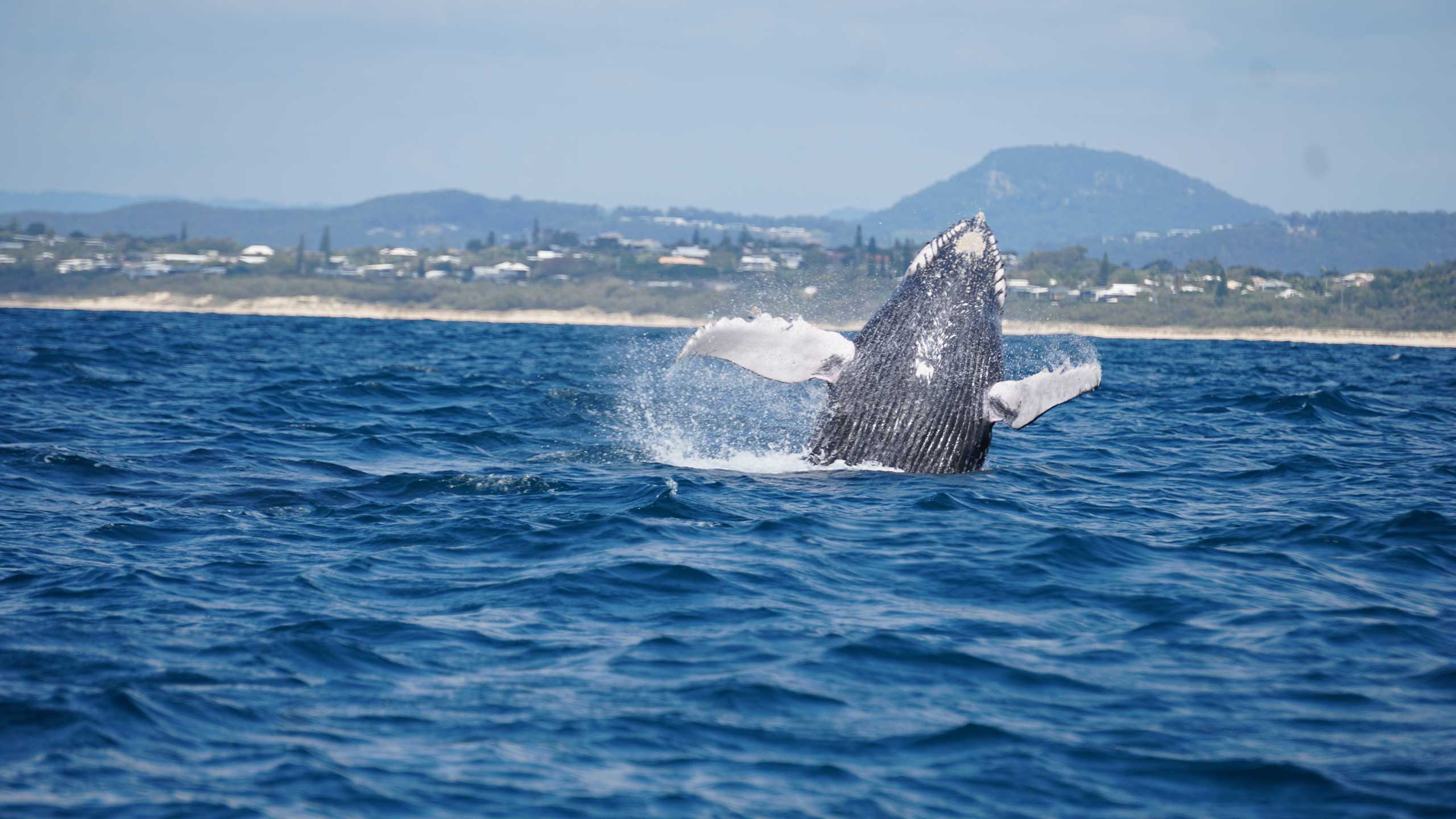
By Dea Clark
When Associate Professor Rebecca Dunlop left Belfast, Northern Ireland, in 2003 for Brisbane, the move was meant to be temporary – and testing the hearing of humpback whales wasn’t part of the plan for the physiology graduate either.
“I'd always wanted to go to Australia and thought while I was here I should probably keep up with research, because my intention was to go back to the UK and do a postdoc,” Dr Dunlop said.
“Animal communication was something I was interested in, and when I saw there was a project on humpback whale communication in Brisbane I thought, well, that's perfect!”
Fast forward two decades and Dr Dunlop, from The University of Queensland’s School of Biological Sciences, has just completed gruelling field work during the whale migration season in waters off Queensland’s Sunshine Coast.
She is two years into a three-year project studying the impact of man-made underwater noise on whale behaviour.
In 2017, Dr Dunlop was part of a team that discovered air guns used for marine exploration were loud enough to affect humpback whales up to three kilometres away, potentially changing their movement patterns as they migrate.
“The ocean is a very noisy place, particularly with oil and gas exploration and naval sonar,” Dr Dunlop said.
“We have a lot to learn about how these sources of noise affect whales.
“Does it stop them feeding or breeding, or is it responsible for mass beaching for example?”

Professor Rebecca Dunlop prepares to tag a whale.
Professor Rebecca Dunlop prepares to tag a whale.
Dr Dunlop’s research is used to inform government policy, particularly in the United States.
“The US usually leads in this area with decision makers using our results to develop their policies, then other countries use these as guidelines to form their own policies,” she said.
“We don't know the hearing range of any species of baleen whale, what frequency range they hear, or how sensitive they are at each frequency.
“At the end of this research, we'll have a lot more data and be able to use it to inform current mitigation measures around noise in the ocean.”
It sounds easy enough, but the field work is demanding.
For six long weeks, Dr Dunlop and the team are up at the crack of dawn to track down the massive marine mammals, and they can sometimes prove elusive in the vast ocean.
“We are in a very small boat, and we have to approach a very large whale and deploy a suction cap tag on that whale using a long pole,” Dr Dunlop said.
“We manage to tag maybe once a day if we're lucky, more like once every three days.”

Professor Michael Noad
Professor Michael Noad
On another boat positioned four kilometres ahead is UQ’s Professor Michael Noad, who uses a speaker to emit sound frequencies.

Professor Michael Noad
“We start the signal so the whales wouldn't be able to hear it and at the point at which they start to detect that signal, that’s when they very subtly change their behaviour,” Dr Dunlop said.
“They usually stop to have a little listen and see what it is, or they might change their direction of travel slightly, and it's at that point we know they've heard the signal.”
Helping the research are 12 volunteer marine science students, who keep a look out and collect behavioural data from Emu Mountain, between Peregian Beach and Coolum.
“The way we've designed our experiments is that the tagging is the icing on the cake, but the real data comes from the hill,” Dr Dunlop said.
“The volunteers have a laptop and track the whales as they move down the coast, and their position is fed into a networked tracking program, developed by surveyor Dr Eric Kniest.
“I can see what the volunteers are doing on my laptop and use this information to position the other boat.”

Volunteer marine science students keep watch and collect behavioural data from Emu Mountain, between Peregian Beach and Coolum.
Volunteer marine science students keep watch and collect behavioural data from Emu Mountain, between Peregian Beach and Coolum.
Dr Dunlop and Professor Noad have worked together for 20 years, but each has a distinct research area.
“I focus on the humpback’s social behaviour and communication while Mike focuses on humpback song, but we've always complemented each other's research,” Dr Dunlop said.
Professor Noad describes their current research as fundamentally important to understanding what humpback whales — a species of baleen whale — can hear.
“Underwater, sound is the main form of communication for many animals and baleen whales produce high level acoustic signals that are important for social communication and critical processes such as mating,” Professor Noad said.
“The ocean is very good at transmitting acoustic energy, but it also means many things humans do in the ocean also produces noise which travels great distances.
“This noise can have a range of effects on marine mammals, but the most important are probably behavioural disturbance and the masking of important social and communication sounds they are making,” he said.

Respect and friendship underpin the working relationship between Dr Dunlop and Professor Noad.
“I’m really proud of our partnership because it’s difficult for people to work together for so long in such a sustained way, but we have complementary skills sets and interests that come together to address some big questions,” Professor Noad said.
Dr Dunlop and the team have completed their field work off Noosa for now, but there is one more migration season to go before the work is complete.
Even then she won’t be leaving Australian shores anytime soon.
“I have a husband, a daughter, two dogs, one parrot, two fish, two chickens, a house and the weather’s much better than Ireland’s,” Dr Dunlop said.
Dr Dunlop will be sharing her interim results with US policy makers once the fieldwork and analyses are complete.
